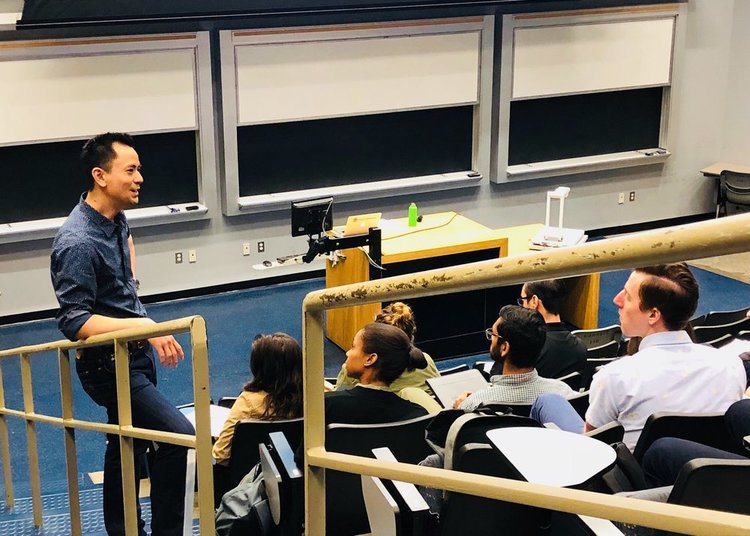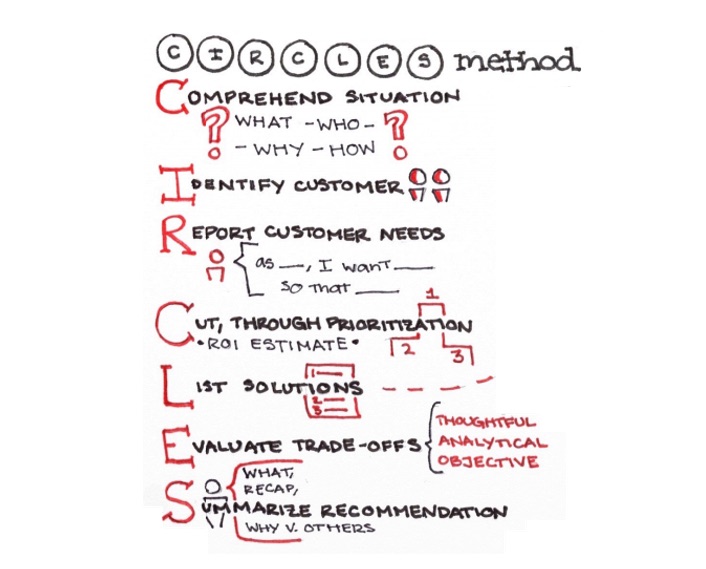[ad_1]

We have now a visitor put up from Swati Priyam. Swati is a product administration veteran with deep technical experience. She’s held roles at a few of the greatest manufacturers together with Expedia, Navis, and EMC. Swati holds a Grasp of Software program Engineering from Carnegie Mellon.
For those who’ve labored with Lewis, participated in his workshops, or learn his books, you understand that he’s all about frameworks.
Frameworks assist immensely, each on the job and on the interview. Frameworks get you higher outcomes and be sure that your considering and communication is thorough. Frameworks may impress your viewers too.
Under, I’ve described his favourite frameworks together with when and the way it’s best to use them.
In line with Lewis Lin, when you’re requested a behavioral query, as an alternative of giving a boring mechanical reply utilizing the STAR (State of affairs, Activity, Motion, Outcome) methodology, you could discover a option to painting your experiences as attention-grabbing, partaking tales that hiring managers can simply perceive and luxuriate in. For that objective, he developed the DIGS framework as proven under:
- D ramatize the scenario
- I ndicate the alternate options
- G o via what you probably did
- S ummarize your impression
Utilizing the DIGS framework not solely permits your interviewer to know the significance of the story you’re speaking about but in addition what you probably did with all potential alternate options in thoughts. Lewis Lin recommends utilizing The Rule of Three framework whereas doing that. A listing of three issues inherently appears extra full than an inventory of two issues. However, an inventory of 4 or 5 issues is simply too many and may get overwhelming to the interviewer.
Whereas explaining the alternate options, it is rather useful to do a execs and cons listing which helps the interviewer perceive the thought technique of the choice the storyteller made to unravel the issue.
Whenever you undergo particulars of what you probably did, you may leverage the 5W and H framework to persuade the interviewer that you simply have been on the driving force’s seat in your story and never simply somebody sitting subsequent to the driving force. Listed under is the breakdown of this framework together with some examples of methods to use them to supply clear particulars in an attention-grabbing method.
- What did you do?
- Who did you name?
- When did you resolve to launch?
- The place was the product launched first?
- Why did you launch it there?
- How did you prioritize?

When requested a product design query, Lewis recommends adopting his CIRCLES Methodology as proven under to prepare your ideas and supply a whole response with out forgetting any step in an interview setting.
- C omprehend the scenario
- I dentify the shopper
- R eport the shopper’s wants
- C ut via prioritization
- L ist Options
- E valuate trade-offs
- S ummarize your suggestions
As you Comprehend the scenario, it’s normally a great follow to make use of the 5W and the H query listing.
Nevertheless, within the curiosity of time, Lewis recommends shortening to simply the 3Ws and H as an alternative:
- What’s it?
- Who’s it for?
- Why do they want it?
- And the way does it work?
To Establish and Report your buyer wants and to sketch the actions of the shopper, draw a buyer journey map. It helps you uncover product enchancment areas simply. Whereas drawing the shopper journey map, take into consideration the 5Es guidelines to assist brainstorm totally different levels of the shopper expertise. Listed here are the 5Es:
- E ntice: What occasion triggers a person to enter into the UX funnel?
- E nter: What are the primary few steps within the UX funnel?
- E ngage: What job(s) is the person making an attempt to perform?
- E xit: How does the person full the duty?
- E xtend: What comply with up actions happen after the person completes the duty?
After you’ve recognized the shopper and their wants and are onto the step of Itemizing the options, you could keep in mind the Rule of three. Brainstorming on a minimum of 3 or extra options will show you how to innovate iteratively and can put you in a cushty scenario because the interviewer critiques your options.
Underneath the product execution query sort, you is likely to be requested to outline metrics for a product as you put together to launch a brand new characteristic to the market. AARM metrics is a superb analytical framework which supplies step-by-step steering to measure your success. Listed under are some pattern inquiries to ask your self as you cope with a metrics query.
- A cquisition – How will you observe buyer sign-ups in your service?
- A ctivation – What number of customers are totally registering in your service?
- R etention – What number of customers are returning to make use of the service typically and in flip, serving to the enterprise?
- M onetization – How a lot income can you gather from the customers?
The McKinsey SCR framework lets you craft a succinct enterprise story. Right here is how it’s best to use it:
- S ituation – Clarify the context and info to familiarize the viewers
- C omplication – What was the issue?
- R esolution – How did you go about fixing the issue?
The ESTEEM Methodology is a step-by-step information for what it’s best to do to climb the PM ladder after you’ve landed an incredible PM job. The elements are as listed:
- E xecution – Legendary PMs ship 5-10x of what common PMs ship
- S uperior communication abilities – Legendary PMs are robust communicators
- T actical consciousness – Legendary PMs work smarter, not tougher
- E xtraordinary psychological toughness – Legendary PMs don’t stop simply
- E xceptional crew builder – Legendary PMs have an incredible community of gifted individuals
- M oonshot imaginative and prescient – Legendary PMs differentiate themselves with a moonshot imaginative and prescient
PEDALS is a six-step framework to information dialogue and growth of scalable methods. The six steps are:
- P roccess necessities
- E stimate
- D esign the service
- A rticulate the Information Mannequin
- L ist the Architectural Comonents
- S scale
Whereas these frameworks, strategies, and acronyms are very helpful in organizing one’s ideas, one should keep in mind why they’re there and methods to use them. They’re meant to make your life simple.
Do not forget that these frameworks are simply tips or checklists, however not full recipes.
For extra particulars, check with Lewis’ books:
Decode & Conquer by Lewis C. Lin
The Product Supervisor Interview by Lewis C Lin
The System Design Interview by Lewis C Lin and Shivam P Patel
Be the Best Product Supervisor Ever by Lewis C Lin
For those who favored this text, tell us by clicking Like.
[ad_2]

